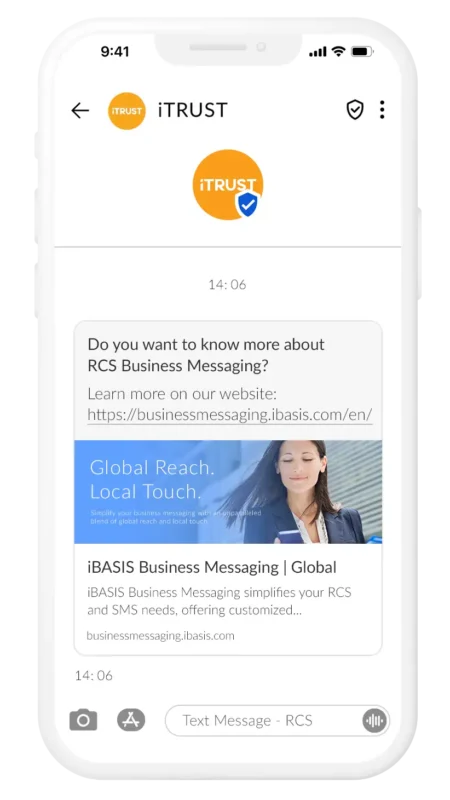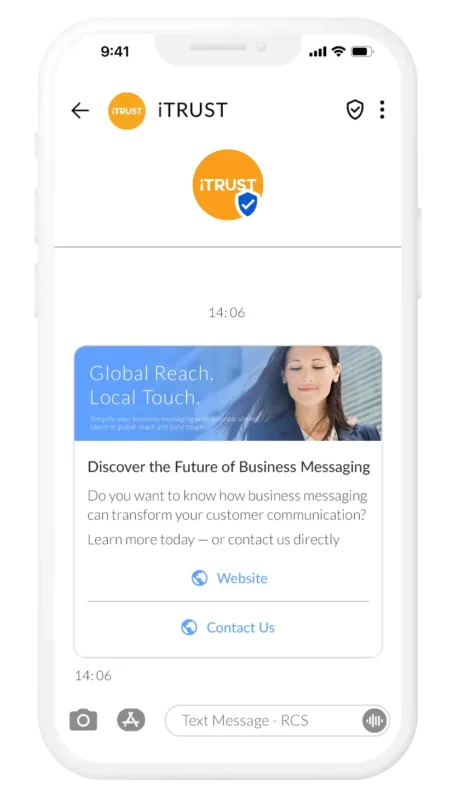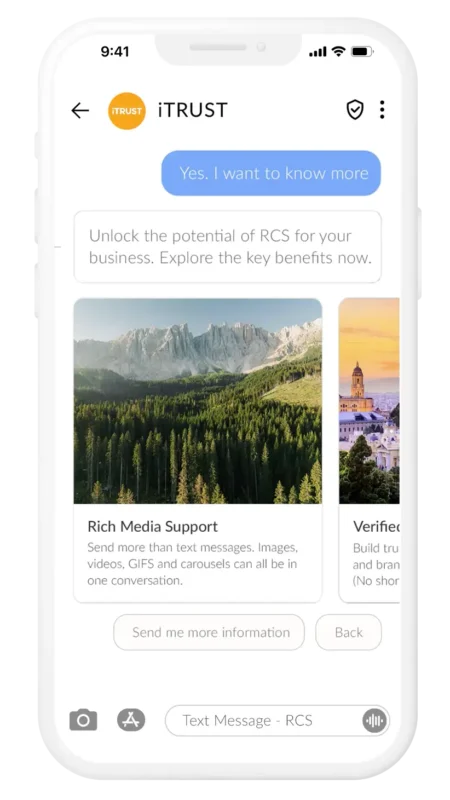Rich Communication Services (RCS) is gaining traction and has a fast-growing user base, especially after the introduction in iOS 18 in 2024 (Android had already implemented RCS in 2016). RCS is not only a new way of communication for smartphone users, but offers a lot of possibilities for business communication and marketing—RCS Business Messaging (RBM) has been introduced in iOS 18.1 in selected markets. So what are the three types of RCS messages and what are the costs for businesses?

RCS Message Type 1: Basic Messages
Basic messages are simply text-based and similar to SMS. They enhance traditional SMS, with 160 characters that can include a URL preview, providing a more engaging way to communicate with users. RCS includes brand verification directly related to trust and avoids fraud with a verified channel. If recipients do not have RCS enabled, SMS will be sent instead. There is no extensive technical overhaul needed for implementation. Sender verification enhances trust in brands, and URL previews increase user engagement.
What can basic messages be used for?
- One-time offers
- Discounts
- Launch of new products
- Flash sales
- Event notifications
- One-time passwords (OTP)
- Order confirmations
- Customer care notifications
- Bank alerts
- Payment status
Basic RCS is the fastest way to go into RCS with less effort involved in the process.

RCS Message Type 2: Single Messages
Single messages can include multimedia elements such as images, videos, carousels, and different reply options such as buttons.
Like basic messages, single messages include brand verification and branding options through the use of colors and fonts, which improves brand recall in customers.
For businesses, single messages are helpful for increasing immediate interaction with ads and promotions.
What are single messages useful for?
- Personalized offers
- Event invitations
- Product showcases
With improved branding compared to basic messages, this type of message offers more options to showcase products and services through images, videos, gifs, and the use of buttons and carousels.
RCS Message Type 3: Conversational Messages

Conversational messages enable rich, real-time, and two-way interactions between users and brands.
These can be:
- A2P (Application-to-Person): The brand initiates the conversation, for example by sending a campaign or notification.
- P2A (Person-to-Application): The user initiates the conversation, either by starting a new chat (e.g., scanning a QR code, clicking a chat button), or by replying to a previous message from the brand.
Both A2P and P2A interactions use the same RCS features—verified sender, rich media, suggested replies/actions, etc. Unlike some other channels, RCS doesn’t enforce a strict 24-hour reply window, allowing for more flexible and ongoing conversations.
What can conversational messages be used for?
- Customer support (also with chatbots)
- Personalized recommendations
- Lead nurturing in general
Conversational messages can reduce the steps between discovery and purchase, and provide valuable data insights to gain a deeper understanding of customer preferences and behavior.
Costs of RBM Messaging
RBM messages are usually billed differently depending on the type of message: non-conversational messages are billed by the number of messages sent and received, conversational messages are usually charged per 24h-session. So for longer or more interactions, using conversational messaging is more cost efficient for businesses.
Integration costs depend on the existing system. If there is already a backend for SMS marketing and communication, the switch to basic messages is usually easy and the best way to start.
Conclusion
The multimedia features of RCS make it a far more advanced and engaging messaging service than traditional SMS/MMS. It provides an interactive and enriched experience for both users and businesses, enabling more dynamic, effective, and personalized communication.
